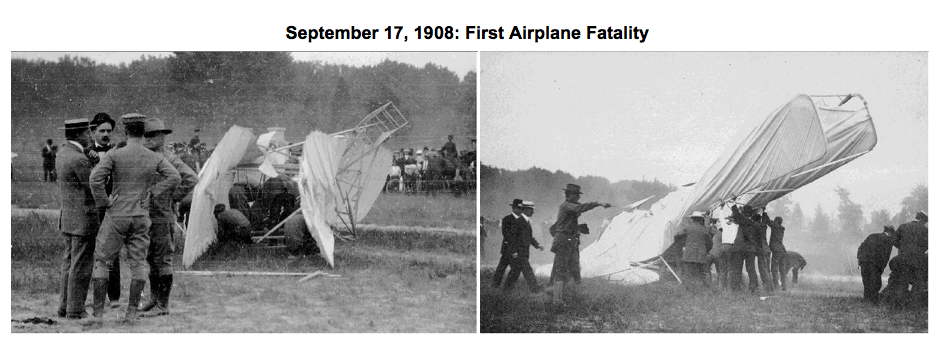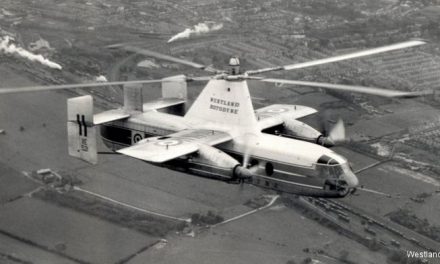
Today in History: First Airplane Fatality
On September 17, 1908 — 106 years ago today — Orville Wright’s lone passenger, U.S. Army Lieutenant Thomas Selfridge, became the first individual to die in an airplane crash. The crash occurred while Orville was engaged in a flight test of his aircraft for the U.S. Army.
Since the Wright brothers’ historic first flight on December 17, 1903, Orville and Wilbur had spent most of their time developing and testing their new invention, and they were confident enough in their product to begin seeking business contracts. In 1908, the U.S. Army finally gave the Brothers an opportunity to demonstrate a “heavier-than-air” flying machine over a measured course that required a series of maneuvers. A contract would be awarded if the plane could fly 2 people, fly 40 miles per hour, make an hour-long endurance flight, and be transportable by Army wagons. The Army also agreed to pay the contract awardee $25,000 for one plane and $2,500 (about $60,000 adjusting for inflation) for every mile per hour that the flying machine speed exceeded 40 mph. The Army intended to use flying machines for observation and reconnaissance work.
Orville had practiced for the Army’s test flights in Fort Myer, Virginia. Much of the public was still not convinced that anyone had achieved powered flight. But news spread about these test flights, and soon thousands were watching them. Orville’s test flights established a number of world records for endurance. The last flight included Lieutenant Selfridge.
From the Wright-Brothers.org site: The flight began normally and uneventfully as Orville made climbing circles around the grounds. Suddenly there were two loud thumps. Later, the Wrights and the Army would learn that a propeller had split. As Orville reached to cut off the engine, the airplane gave a violent shake as the broken propeller caught the aircraft rigging. The craft lunged for the ground, hitting nose first and burying the pilot and passenger in a twisted mess of wood, wire, and cloth.
Orville, bleeding and unconscious, was pulled from the subsequent wreckage. Lt. Selfridge was trapped in the wreck, and it took much longer to extricate him. Both men were taken to the fort’s hospital. Lt. Selfridge died on the operating table, the first victim of an accident in a powered flying machine. Orville suffered a broken leg, broken ribs, and an injured back. Although in serious condition, Orville survived and the Brothers were awarded the Army contract the next year.
Sources:
•http://www.historynet.com/the-first-airplane-fatality-february-01-american-history-feature.htm
•http://www.wired.com/2010/09/0917selfridge-first-us-air-fatality/
•http://www.wright-brothers.org/History_Wing/Wright_Story/Showing_the_World/Tragedy_at_Fort_Myer/Tragedy_at_Fort_Myer.htm
•http://www.nps.gov/nr/travel/aviation/ftm.htm
•https://airandspace.si.edu/exhibitions/wright-brothers/online/age/1910/military.cfm
•https://airandspace.si.edu/exhibitions/wright-brothers/online/age/1910/military.cfm
•http://www.space.com/17431-wright-flyer-test-flights-at-fort-myer-va.html
Image credit:
http://www.wright-brothers.org/TBR/History%20Images/1910-1916/1908%20Fort%20Meyer%20Crash%207.jpg
•http://www.wright-brothers.org/TBR/History%20Images/1910-1916/1908%20Fort%20Meyer%20Crash%204.jpg




Recent Comments